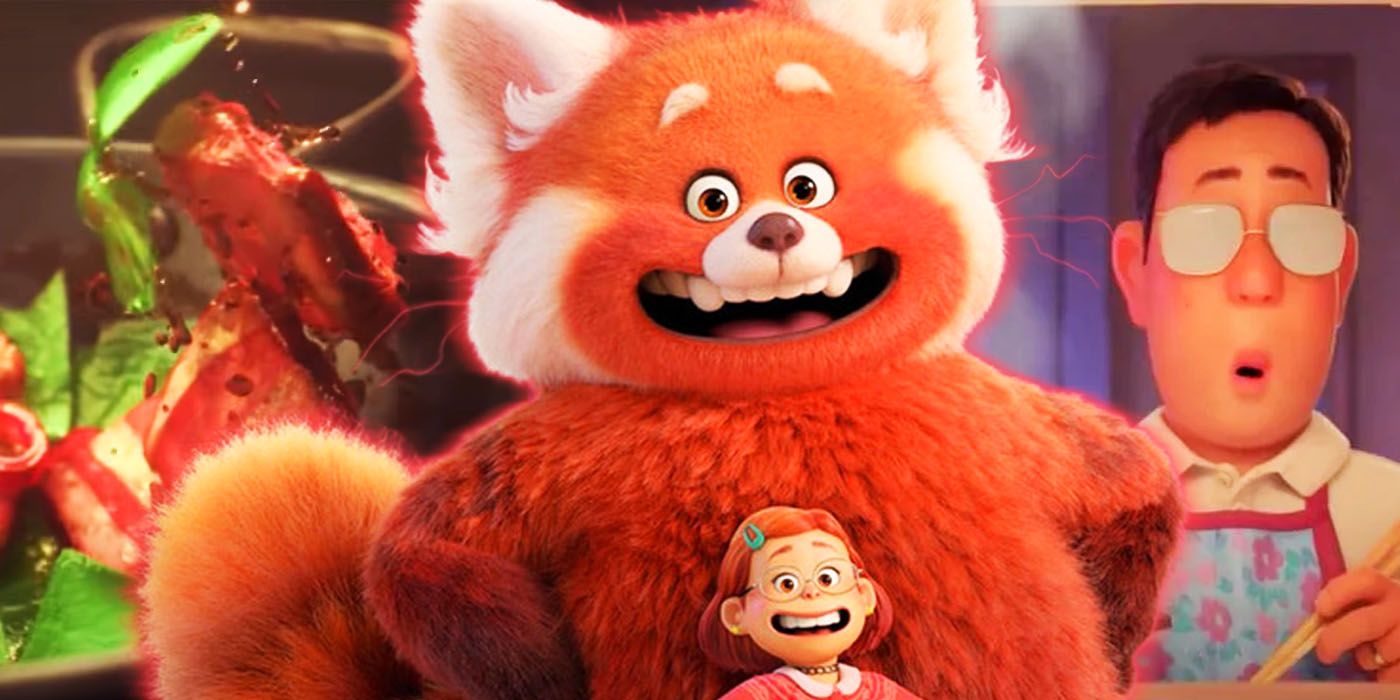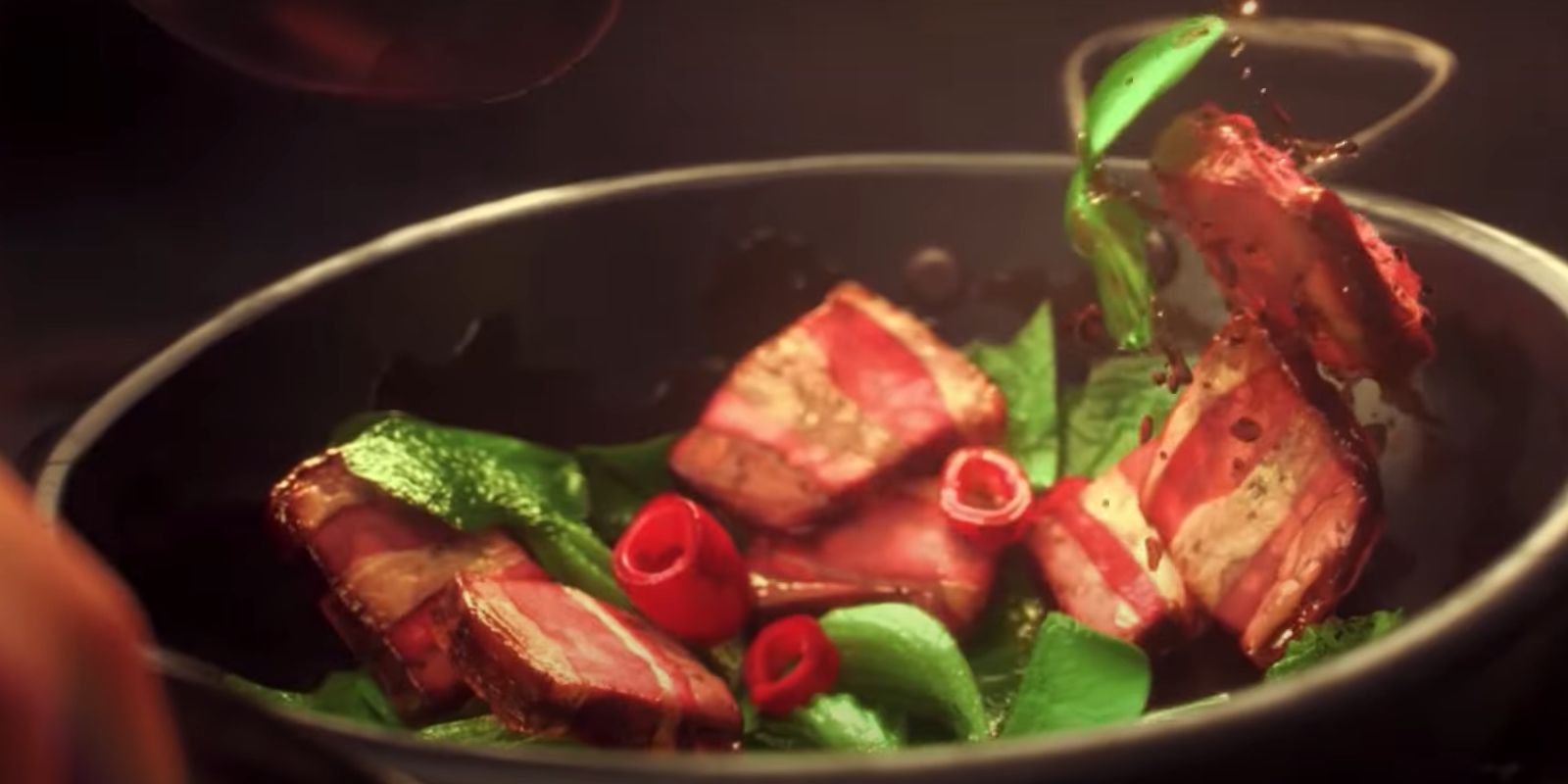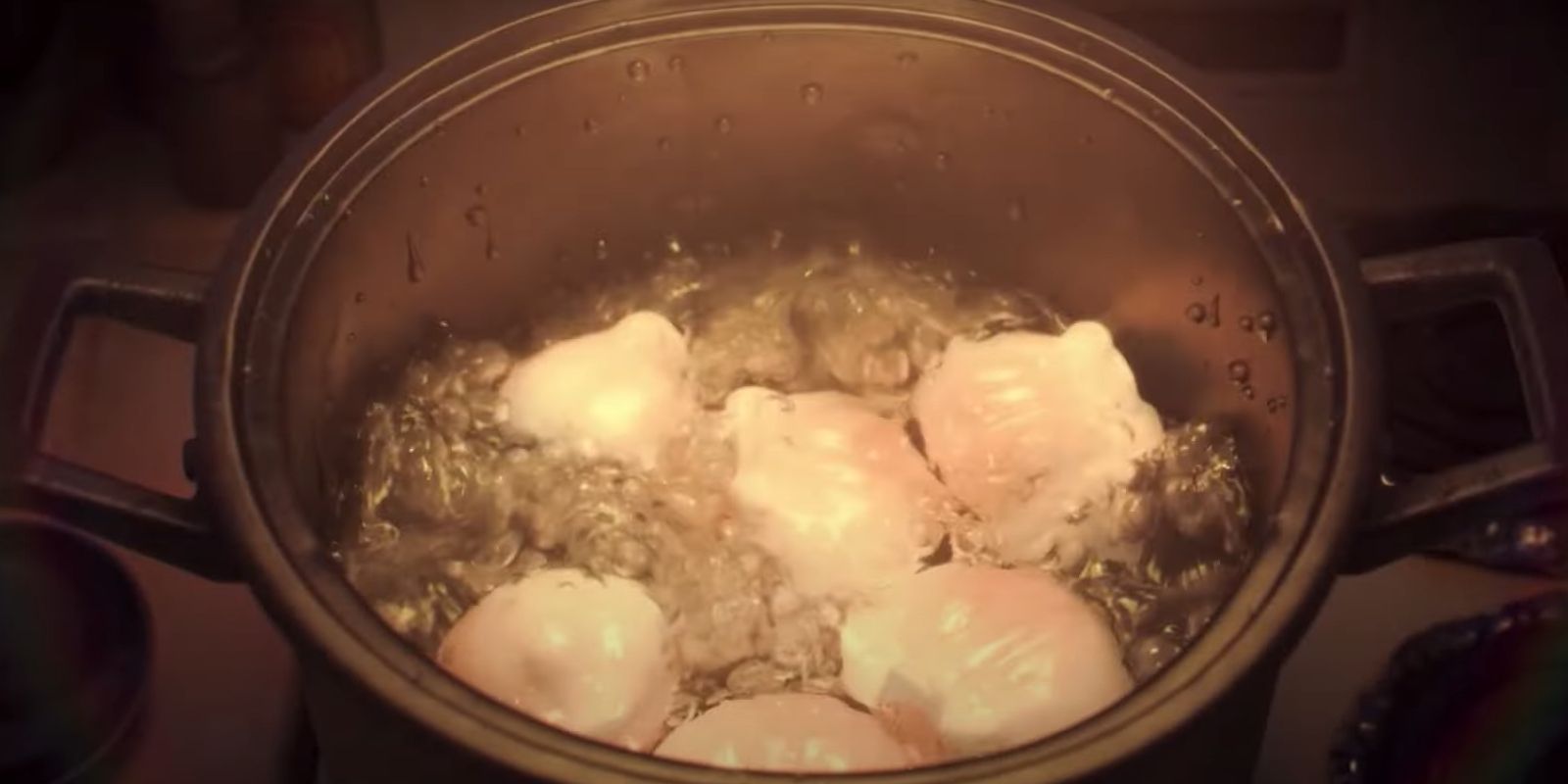WARNING: The following contains spoilers for Turning Red, now streaming on Disney+.
Pixar's Turning Red is an authentic, highly specific depiction of a girl growing up as a child of Asian immigrants in early-2000s Toronto. In every aspect of the film's setting and details, director Domee Shi's personal experience and immediate connection to the material shines through. Those from similar family backgrounds will instantly recognize things like the worn floral couch Mei's mom sits on as she watches Cantonese period dramas, the cheesy family photos with everyone in traditional dress and the scrolls bearing characters like "xiao" (meaning "filial piety") hanging on the walls of the Lees' house.
One of the film's best homages to Chinese immigrant family culture comes about ten minutes in when Mei heads home for dinner. There, her dad Jin is preparing a stunning home-cooked meal, and for a few minutes, Turning Red becomes a full-on sensory experience celebrating Chinese home cooking. The scene is a visually stunning showstopper, and it ends with a sweetly funny sight gag that serves as a perfect character introduction for Jin. Despite how short it is -- the sequence lasts about half a minute -- it's extremely memorable and arguably one of the best moments in the film. Pixar's previous hit, Ratatouille, was and still is one of the best movies about cooking ever made, but with this Turning Red scene, the studio may have outdone itself once again.
On a purely technical level, the cinematography in the scene is jaw-dropping. The advancements Pixar has achieved over the last decade are on full and glorious display in the dramatic lighting and exquisitely rendered details, perfect down to the smallest droplet of water. Each element of the cooking process shown is spot-on, from the classic cleaver-style knife Jin uses to expertly chop vegetables to the thick, dark soy sauce he splashes over the food to the sizzling and well-used wok he tosses it all in. The camera lovingly lingers on the wontons he's boiling, with their translucent plump skins glistening and hinting at the delicious fillings inside. All of these lush visuals are set to a stirring, romantic score, and each sound effect is crisp and lifelike as can be. It's a true feast for the senses, one that can practically be smelled and tasted through the screen.
Then there's the underlying emotional significance of the sequence. Many Asian families struggle with openly showing affection, and parents tend to demonstrate their love for their children through actions like cooking meals or cutting fruit rather than verbal affirmations. A table laden with a child's favorite dishes is often one of the core memories many first and second-generation Asian kids hold in their hearts when they think of family and home. Not only is it wonderful to see the rich and important history of incredible Chinese food being honored, but it's also incredibly meaningful to see this specific element of Asian immigrant culture being recognized and cherished.
The scene is also a great introduction to Mei's father. Jin is a quiet and unassuming man who mostly serves as a background character in Turning Red's female-driven story. He takes a backseat when it comes to parenting Mei, following Ming's lead -- a refreshing change from the typical gender norms depicted in most family movies. However, his thoughtful, loving and supportive nature comes into play at several key moments in the film, and it's his unconditional acceptance of Mei that ultimately allows her to unlock her true self and resolve her conflicts with her mother. His sweet goofiness, as displayed in the cooking sequence's hilarious ending, is also a welcome contrast to Ming's overbearing, anxious energy. He even stars in the movie's adorable post-credits scene, an underrated standout moment in the film that deserves more discussion online.
Jin's starring turn as the Lee family chef may seem insignificant in the grand scheme of things, especially considering how short the moment is. But the meaning behind it and the pure artistic craft it displays makes it one of the best scenes in Turning Red. The amount of care and thought that was put into this brief sequence is truly emblematic of just how special and heartfelt this movie is.
To experience Mei's dad's exquisite home cooking, Pixar's Turning Red is streaming now on Disney+.



